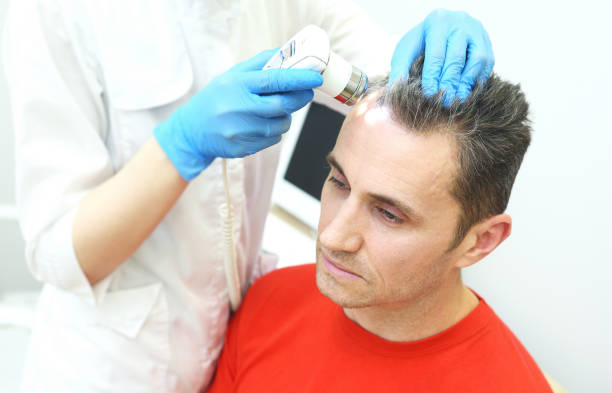Do You Notice These Small Movements? It Might Be Tardive Dyskinesia — And You’re Not Alone
If you've started noticing involuntary facial movements, tongue protrusion, or repetitive limb motions that seem beyond your control, you might be experiencing tardive dyskinesia. This neurological condition affects hundreds of thousands of Americans, yet many people don't recognize the early signs or understand that effective treatments are now available. Understanding what tardive dyskinesia is and knowing your treatment options can make a significant difference in managing these symptoms and improving your quality of life.

What Is Tardive Dyskinesia — And Who’s at Risk?
Tardive dyskinesia is a neurological disorder characterized by repetitive, involuntary movements that typically affect the face, tongue, lips, and sometimes the limbs and torso. The condition most commonly develops as a side effect of long-term use of certain medications, particularly antipsychotic drugs used to treat mental health conditions like schizophrenia, bipolar disorder, and severe depression.
The risk factors extend beyond just medication use. Age plays a significant role, with older adults being more susceptible to developing tardive dyskinesia. Women, particularly those who have gone through menopause, face higher risks than men. Additionally, individuals with diabetes, those who smoke, and people with a history of substance abuse may be more vulnerable to developing this condition.
Certain ethnic groups also show varying susceptibility rates, though the exact reasons remain under scientific investigation. The duration and dosage of antipsychotic medication use directly correlate with increased risk, making long-term patients particularly vulnerable to developing these involuntary movements.
Why Early Detection Matters
Recognizing tardive dyskinesia in its early stages can significantly impact treatment outcomes and prevent the condition from progressing to more severe, potentially irreversible symptoms. Early detection allows healthcare providers to adjust medications before permanent neurological changes occur.
The initial signs often appear subtle and may be mistaken for normal aging or stress-related behaviors. These can include slight facial twitching, occasional tongue movements, or finger tapping that seems beyond conscious control. As the condition progresses, movements become more pronounced and frequent, potentially affecting speech, eating, and social interactions.
Early intervention strategies can include medication adjustments, switching to alternative treatments with lower tardive dyskinesia risk profiles, or implementing specialized therapies designed to manage symptoms. The sooner these interventions begin, the better the chances of minimizing long-term impact on daily functioning and overall quality of life.
What Can Be Done?
Treatment options for tardive dyskinesia have expanded significantly in recent years, offering hope for those experiencing these challenging symptoms. The FDA has approved specific medications designed to reduce tardive dyskinesia symptoms, including deutetrabenazine and valbenazine, which work by regulating dopamine activity in the brain.
Medication management often involves a careful balance between treating the underlying mental health condition and minimizing tardive dyskinesia symptoms. Healthcare providers may recommend switching to newer antipsychotic medications with lower risk profiles or adjusting dosages to find the optimal therapeutic balance.
Non-pharmacological approaches include physical therapy, occupational therapy, and specialized movement therapies that can help patients develop coping strategies and potentially reduce symptom severity. Some patients benefit from stress reduction techniques, dietary modifications, and regular exercise programs tailored to their specific needs and limitations.
| Treatment Option | Provider/Source | Estimated Cost Range |
|---|---|---|
| Deutetrabenazine (Austedo) | Teva Pharmaceuticals | $6,000-$8,000/month |
| Valbenazine (Ingrezza) | Neurocrine Biosciences | $7,000-$9,000/month |
| Physical Therapy | Local rehabilitation centers | $100-$200/session |
| Occupational Therapy | Healthcare facilities | $150-$250/session |
| Neurologist Consultation | Specialized clinics | $300-$600/visit |
Prices, rates, or cost estimates mentioned in this article are based on the latest available information but may change over time. Independent research is advised before making financial decisions.
Talk to Your Doctor Today
If you suspect you might be experiencing tardive dyskinesia symptoms, scheduling a conversation with your healthcare provider should be your immediate priority. Many patients hesitate to discuss these symptoms due to embarrassment or fear that treatment adjustments might affect their mental health stability.
Prepare for your appointment by documenting when you first noticed the movements, their frequency and intensity, and any factors that seem to worsen or improve the symptoms. Your doctor will likely conduct a thorough neurological examination and review your medication history to determine the best course of action.
Don’t let concerns about medication changes prevent you from seeking help. Modern treatment approaches often allow for effective management of both the underlying condition and tardive dyskinesia symptoms. Your healthcare provider can work with you to develop a comprehensive treatment plan that addresses all aspects of your health while minimizing unwanted side effects.
Tardive dyskinesia affects thousands of Americans, but you don’t have to face this condition alone. With proper medical guidance, appropriate treatment options, and early intervention, many people successfully manage their symptoms and maintain their quality of life. The key lies in recognizing the signs early and working closely with healthcare professionals to develop an effective, personalized treatment strategy.
This article is for informational purposes only and should not be considered medical advice. Please consult a qualified healthcare professional for personalized guidance and treatment.




